|
|
Basement external waterproofing, and external drainage membrane.
What are your choices?
-
Sticky-back membrane. BS8102:2022 doesn't like it because it doesn't always stick and when it tears it isn't always repaired.
A video on YouTube demonstrating the problems.
-
Clay filled carpet that expands when wet. But it expands too early, before the concrete arrives, and fails badly.
-
Waterproof paint, bitumen or asphalt applied hot or cold all over outside. paint gets damaged, Asphalt is far too expensive.
-
Render. BS8102:2022 doesn't like single coat renders. Multi coat obviously starts getting expensive.
-
Rubbing in a cement slurry to densify the concrete surface to reduce porosity. Probably partly repairs the damage caused by the labour adding more water when the concrete arrived.
-
External drainage. Gravity or pumped.
|
|
|
I don't think you should use any of them, except external drainage if it will always drain away under gravity even during a fierce storm.
Your concrete can be completely waterproof, with my supervision, and you don't want to rely on a pump that might break down.
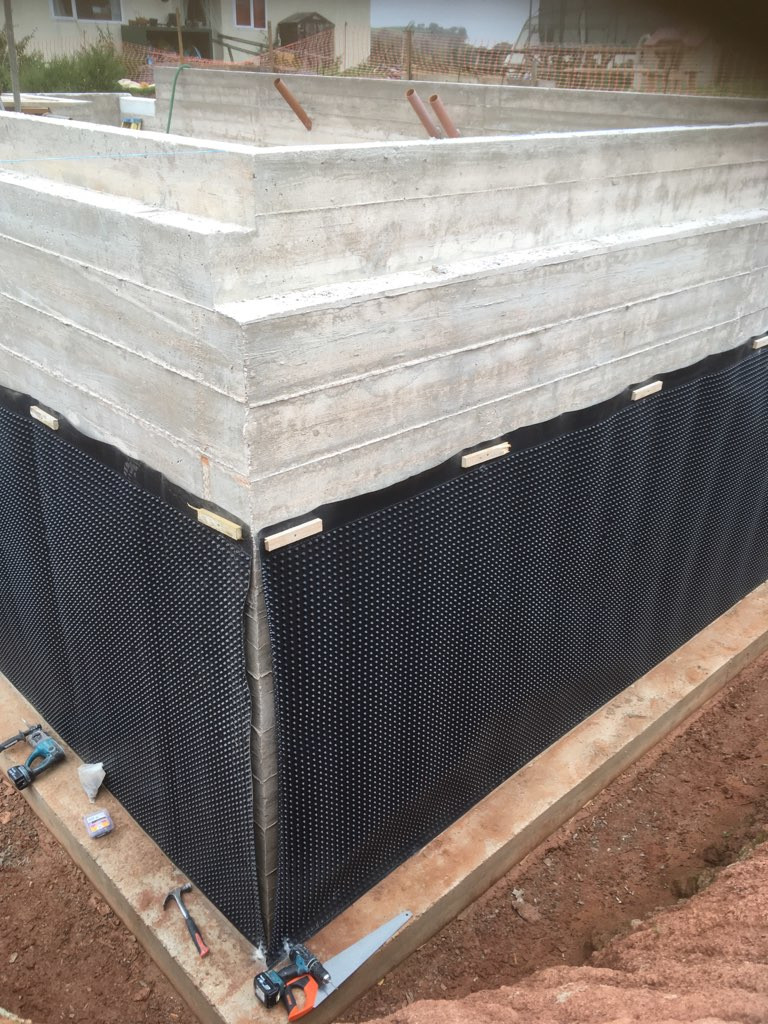

|
|
We are not trying to waterproof with this membrane. Just drain any water against the basement down to the land drain.
It is a lot easier and cheaper than shingle.
Fix the membrane to the wall. Cover it in non-woven geotextile filter membrane, making it continuous, with overlaps is fine, from around the land drain pipe, up the wall and folded over the membrane at the tops and sides.

|
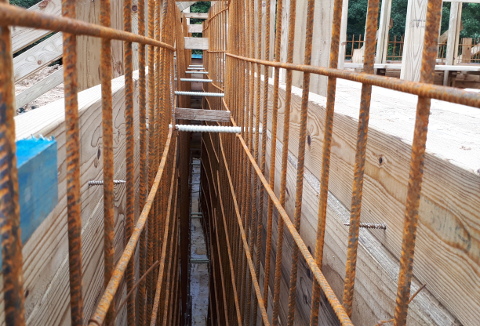
|
|
See the small blue block of roof batten fixed just inside the formwork to be concreted in.
It is very easy to add a row of blocks where you will fix the top of the membrane. Mine is 1.9m wide, or high.
The blocks remain when you strike the formwork.
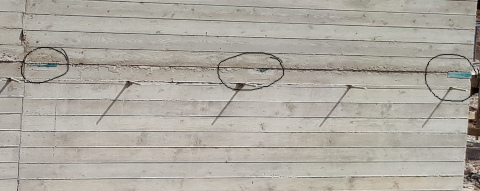
|
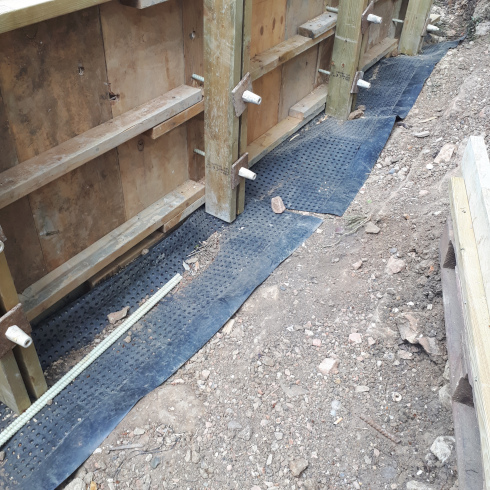
|
|
My membrane is tough stuff. It doesn't damage easily been walked over or crush when backfilled against.
|
Each roll is 10m long. The width is 1.9m. The effective width of bobbles is 1.8m. The bobbles, or dimples, are 8mm deep. Each roll weighs 20.5kgs.
My price, with free delivery if I bring it with me when you pay for a visit, is £75. No VAT.
Back to the Basement Building Questions Answered menu.
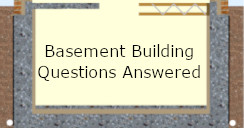
|
Forward to the Basement Building Construction Manual menu.
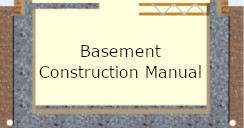
|
For a fixed fee of £199 I will answer all your questions by email. More details here.

|
Previous Page

|
|
Next Page
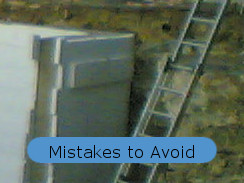
|
|
The Page After That

|
|
|
|

